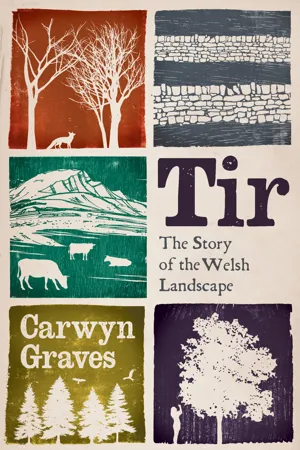
- 240 pages
- English
- ePUB (mobile friendly)
- Available on iOS & Android
About this book
In Tir – the Welsh word for 'land' – writer and ecologist Carwyn Graves takes us on a tour of seven key elements of the Welsh landscape, such as the ffridd, or mountain pasture, and the rhos, or wild moorland. By diving deep into the history and ecology of each of these landscapes, we discover that Wales, in all its beautiful variety, is at base just as much a human cultural creation as a natural phenomenon: its raw materials evolved alongside the humans that have lived here since the ice receded.
In our modern era of climate concerns and polarised debates on land use, diet and more, it matters that we understand the world we are in and the roads we travelled to get here. By exploring each of these key landscapes and meeting the people who live, work and farm in them, Tir offers hope for a better future; one with stunningly beautiful, richly biodiverse landscapes that are ten times richer in wildlife than they currently are, and still full of humans working the land.
Frequently asked questions
- Essential is ideal for learners and professionals who enjoy exploring a wide range of subjects. Access the Essential Library with 800,000+ trusted titles and best-sellers across business, personal growth, and the humanities. Includes unlimited reading time and Standard Read Aloud voice.
- Complete: Perfect for advanced learners and researchers needing full, unrestricted access. Unlock 1.4M+ books across hundreds of subjects, including academic and specialized titles. The Complete Plan also includes advanced features like Premium Read Aloud and Research Assistant.
Please note we cannot support devices running on iOS 13 and Android 7 or earlier. Learn more about using the app.
Information
Table of contents
- Cover
- Title
- Copyright
- Contents
- Foreword
- 1. Introduction: old mountainous Wales, the bards’ paradise
- 2. Coed
- 3. Cloddiau
- 4. Cae
- 5. Ffridd
- 6. Mynydd
- 7. Rhos
- 8. Perllan
- 9. Epilogue: adnewyddu/renewal
- Notes
- Acknowledgements
- Bibliography
- Plate Section